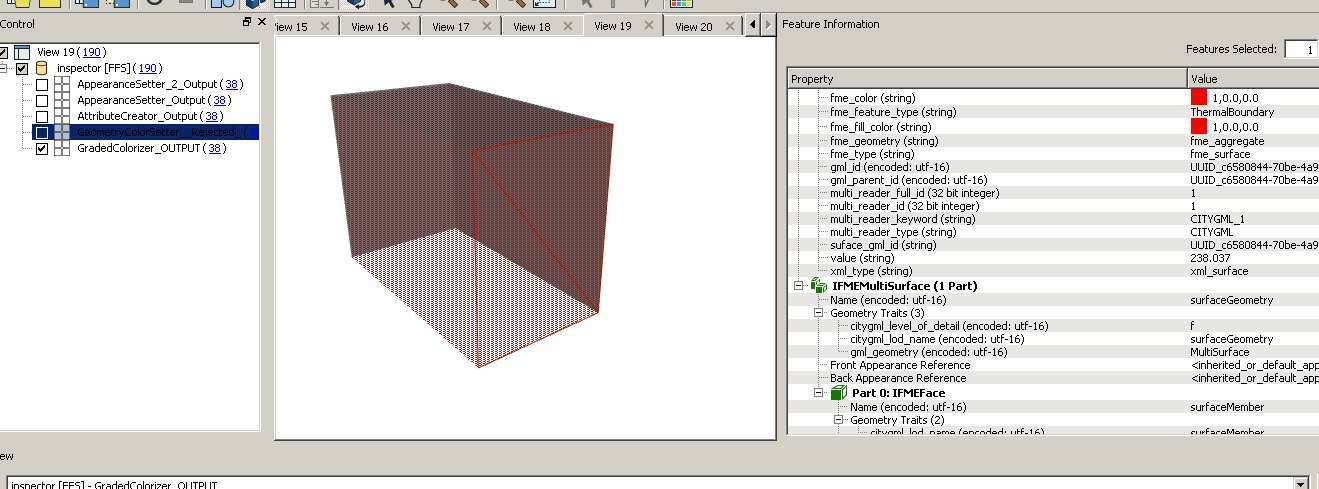Hi,
I'm trying to programmatically assign colours based on an attribute to 3D geometry features for visualisation in Data Inspector. However, I can't work out how to do this without splitting features using a filter and then branching to loads of different ApperanceSetter transformers and setting a separate colour in each of those.
I discovered there is what looks to be a very helpful custom transformer called GradedColorizer which has a few algorithms for binning an attribute value then assigning a fme_fill_color property. However, setting that fill_color property doesn't actually seem to result in my model being shaded correctly in Data Inspector (ie. still appears as a wireframe, see image below).Any ideas why this might be? If I use ApperanceSetter it works fine, but I can't programmatically set the colours using that.






